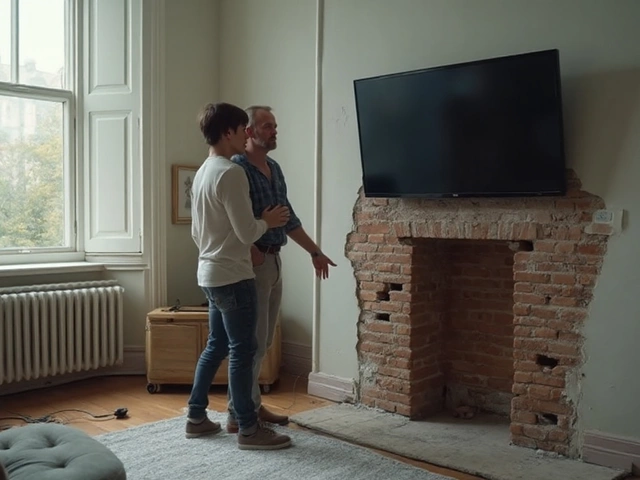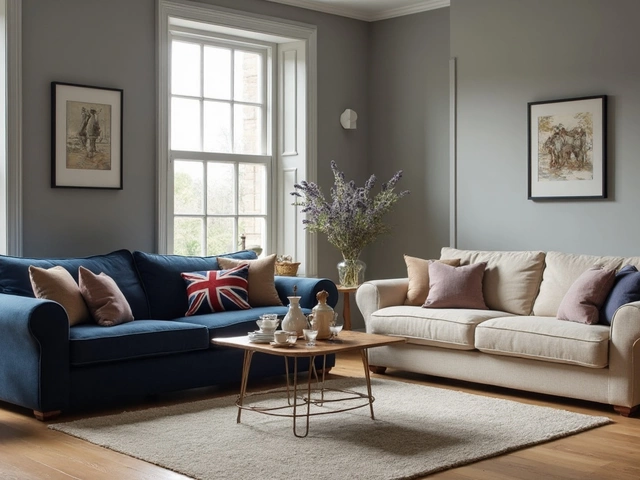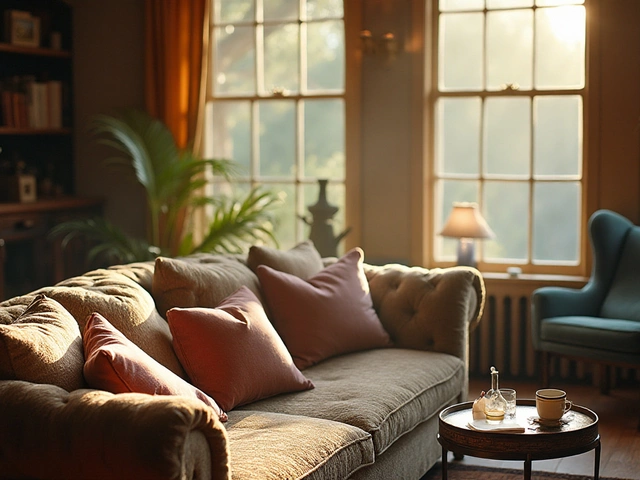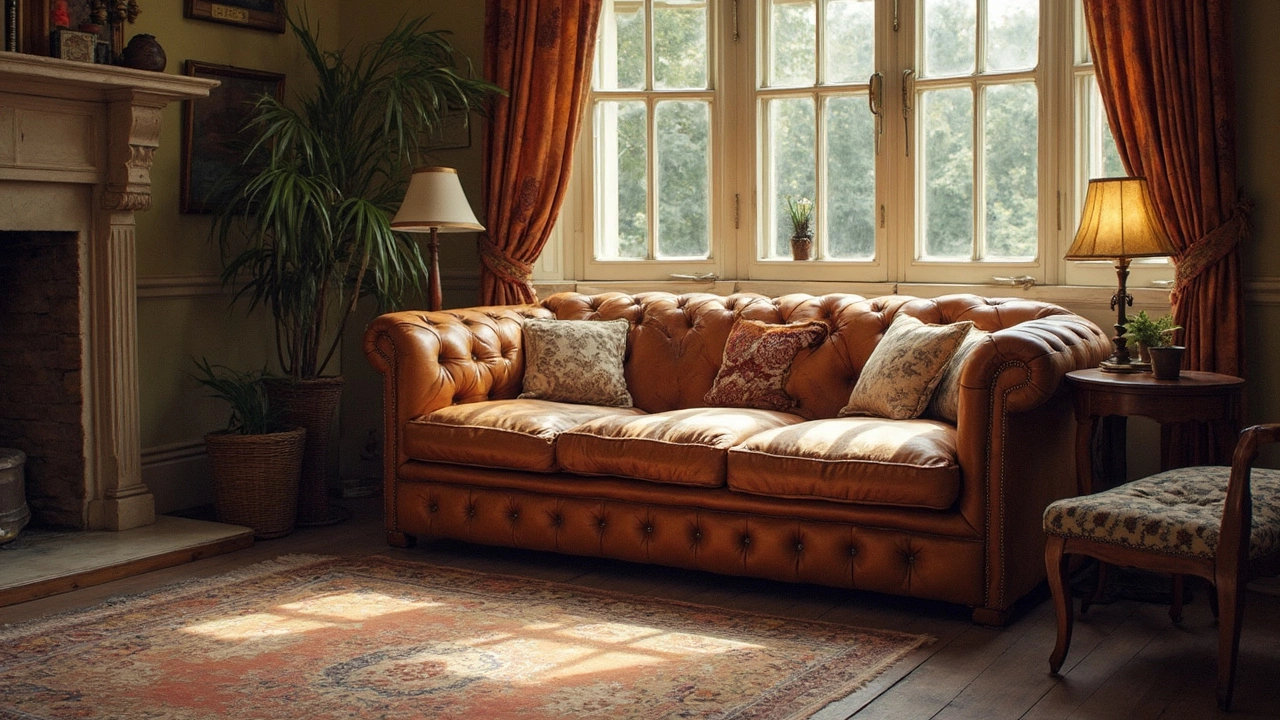 22
Mar,2025
22
Mar,2025
Ever bought a sofa that turns into a saggy disappointment within months? Well, you're not alone. Finding the right sofa that stands the test of time isn't just about aesthetics—it's about durability too. The secret to a non-sagging sofa lies in its construction and material choices. Let's uncover some truths about what makes a sofa stay firm and supportive.
Sofa durability is often determined by its frame. Most sturdy options use hardwood like oak or maple, which can withstand daily wear and tear. Softwoods or particleboard may be cheaper but tend to weaken and cause sagging faster. Checking the type of wood used can save you from a saggy fate.
- Understanding Sofa Construction
- Materials Matter
- Cushion Considerations
- Maintenance Tips for Longevity
Understanding Sofa Construction
When it comes to buying a sofa that won't sag, understanding its construction is crucial. The magic really starts with the frame, which is like the backbone of the sofa. A good frame can make all the difference and keep your couch looking great for years.
Frame Materials and Techniques
The best frames are made from kiln-dried hardwoods like oak, ash, or beech. Why? Because these materials resist warping and cracking over time. Sofas with frames made from plywood or particleboard might be easier on the wallet but often lead to sagging issues quicker than you'd like.
Take a look at the joint construction. The strongest frames are constructed using techniques such as dowels, wooden corner blocks, or metal brackets. These methods provide extra stability compared to simple stapling or nails.
Spring Systems
Another key player in the construction of a durable sofa is its spring system. The most common spring systems are eight-way hand-tied springs or sinuous springs. Eight-way is often considered the gold standard because of its excellent support and comfort, while sinuous springs, with their S-shaped rows, offer a more budget-friendly yet decent alternative.
| Spring Type | Durability | Support Level |
|---|---|---|
| Eight-Way Hand-Tied | High | High |
| Sinuous Springs | Medium | Medium |
When testing out a sofa's resilience, sit in different spots and listen for any squeaking. If you hear noises, it might be a sign of weak springs or poorly constructed frames, contributing to future sagging.
Consider the Feet
The feet of the sofa may not seem significant, but they play a part too. Look for sofas with legs that are part of the frame, not just screwed on. These tend to be sturdier and offer better support in the long run.
By paying attention to these construction details, you can pick a sofa that not only fits your style but also stands the test of time in your living room.
Materials Matter
Choosing the right materials can make or break your sofa purchase. Seriously, materials do all the heavy lifting. When you hear about saggy cushions or the fabric wearing out, it's often due to material choices.
Frame Materials
The frame is the skeleton of your sofa, and using high-quality wood is crucial. Hardwood, like oak or maple, is the gold standard. These materials offer great strength and durability, supporting the sofa for years. Avoid softwood or particleboard frames as they can lead to early sagging and compromise the sofa's durability.
Cushion Fillings
Everyone loves a plush cushion, but not at the expense of ending up with pancakes! Foam density makes a huge difference. High-density foam provides resistance to sagging and offers a longer lifespan. Memory foam is another option that molds to your shape but ensures the cushion bounces back. Just remember, firmness often equals longevity.
Upholstery Fabrics
The right fabric can save you from the constant battle against wear and tear. Consider materials like microfiber or leather—they're tough and surprisingly easy to clean. If you go for fabrics like cotton or linen, make sure they're heavy-duty or have some sort of protective finish.
Metal Parts and Springs
Don’t overlook sofas with metal springs in the seat area. Look for eight-way hand-tied springs or sinuous springs—they're signs of a well-constructed sofa. Although sinuous springs tend to be a bit more budget-friendly, both types should provide solid support.
In short, paying close attention to these materials will help you find a sofa that stays comfy and sag-free longer.
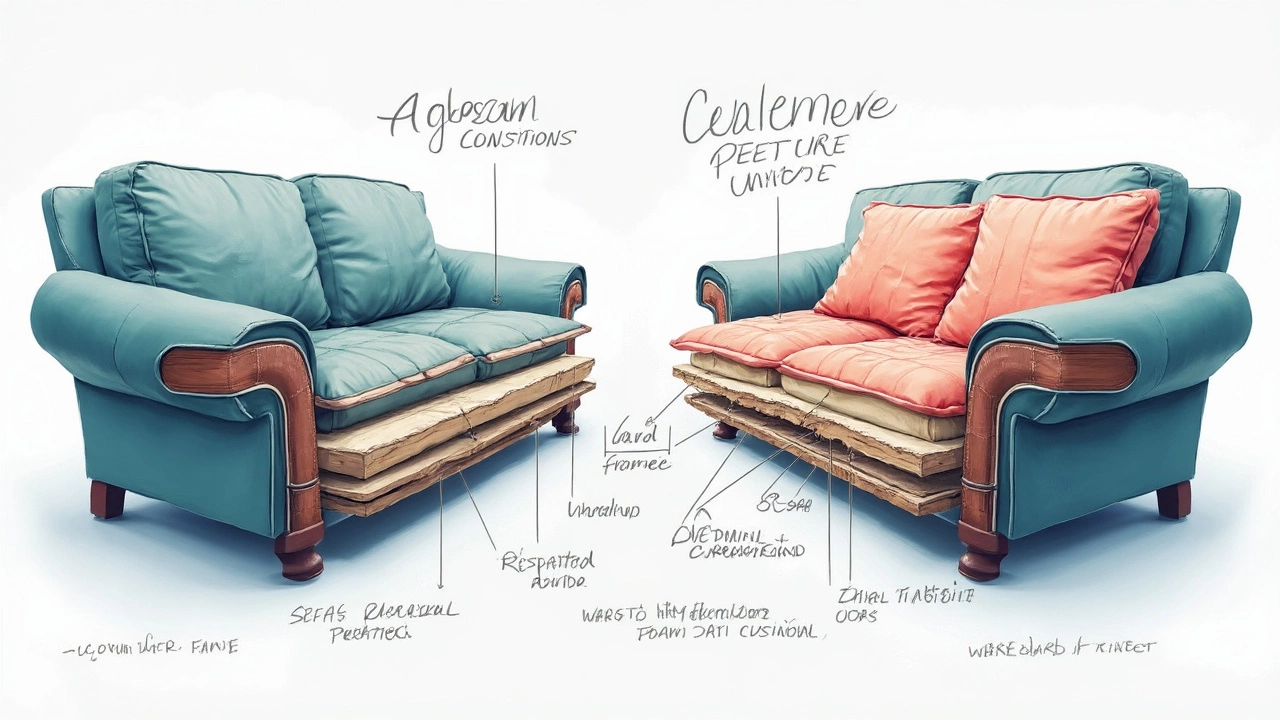
Cushion Considerations
Let’s face it: the cushions do the heavy lifting when it comes to comfort and longevity in your sofa. Picking the right type of cushioning is crucial if you want to avoid that dreaded sag.
Foam Density Matters
A critical factor in the longevity of your sofa cushions is foam density. High-density foam, usually around 2.5 pounds per cubic foot, keeps its shape better and provides firmer support compared to low-density options. It’s a straightforward way to ensure your sofa doesn't lose its oomph.
In the words of furniture expert Jane Bennett,
“Investing in quality foam might cost more upfront, but it translates into years of comfortable seating without sag.”
Spring Core Systems
If you’re looking for added resilience, check out spring core systems. Inserting springs within the cushions can prevent flattening over time and distribute weight evenly.
Choosing the Right Cushion Fill
Apart from foam, you’ve got options like down, polyester, or a blend. Down is plush but needs regular fluffing, polyester's great for budget constraints, while a blend often offers balanced comfort. So pick what matches your style of lounging!
Pro Tip: Rotate and Flip
Even with the best materials, regular care helps extend cushion life. Rotate and flip your cushions every few months to even out wear. It’s a simple habit that'll save you cash and backaches down the road.
Here's how some common cushion materials compare in terms of durability and comfort:
| Material | Durability | Comfort |
|---|---|---|
| High-Density Foam | High | Firm |
| Down | Medium | Soft |
| Polyester | Low to Medium | Moderate |
In short, understanding cushion options can make all the difference when hunting for a reliable sofa. Make informed choices, and your sofa will thank you!
Maintenance Tips for Longevity
Keeping your sofa looking good and preventing that dreaded sag requires a little love and care. Here are some straightforward tips you can follow.
Regular Fluffing and Rotation
The cushions need regular attention. Fluff them up frequently to keep them in good shape and rotate them every so often to avoid uneven wear. If your cushions have removable covers, give them a shake. It helps redistribute the filling inside, making it less likely to settle. Also, swap the cushions from one side to the other to ensure even pressure distribution.
Protect from Sun and Moisture
Your sofa hates direct sunlight and moisture as much as you do. These can cause fabric fading and damage over time. If your sofa is in a sunny spot, try using blinds or curtains to minimize exposure. As for moisture, ensure your sofa isn't placed too close to windows where rain might sneak in or in a humid space.
Clean Spills Immediately
Spills are part of life, but letting them sit can be bad news for your living room centerpiece. Absorb spills right away using a clean, dry cloth. For tougher stains, make sure you're using the right cleaner for your sofa's material, whether it's leather or fabric.
Weekly Vacuum Sessions
Don't underestimate what a weekly vacuum can do. It helps in picking up dust and dirt that otherwise might embed into the fabric. Use an upholstery attachment for your vacuum to get into all the nooks and crannies.
- For pet owners, a lint roller can be a great tool to remove pet hair.
- Consider a handheld vacuum for those tight spots.
These small efforts can make a big difference in maintaining your sofa's shape and comfort. After all, a well-maintained sofa promises both comfort and style for years to come.


